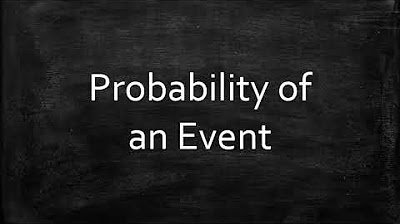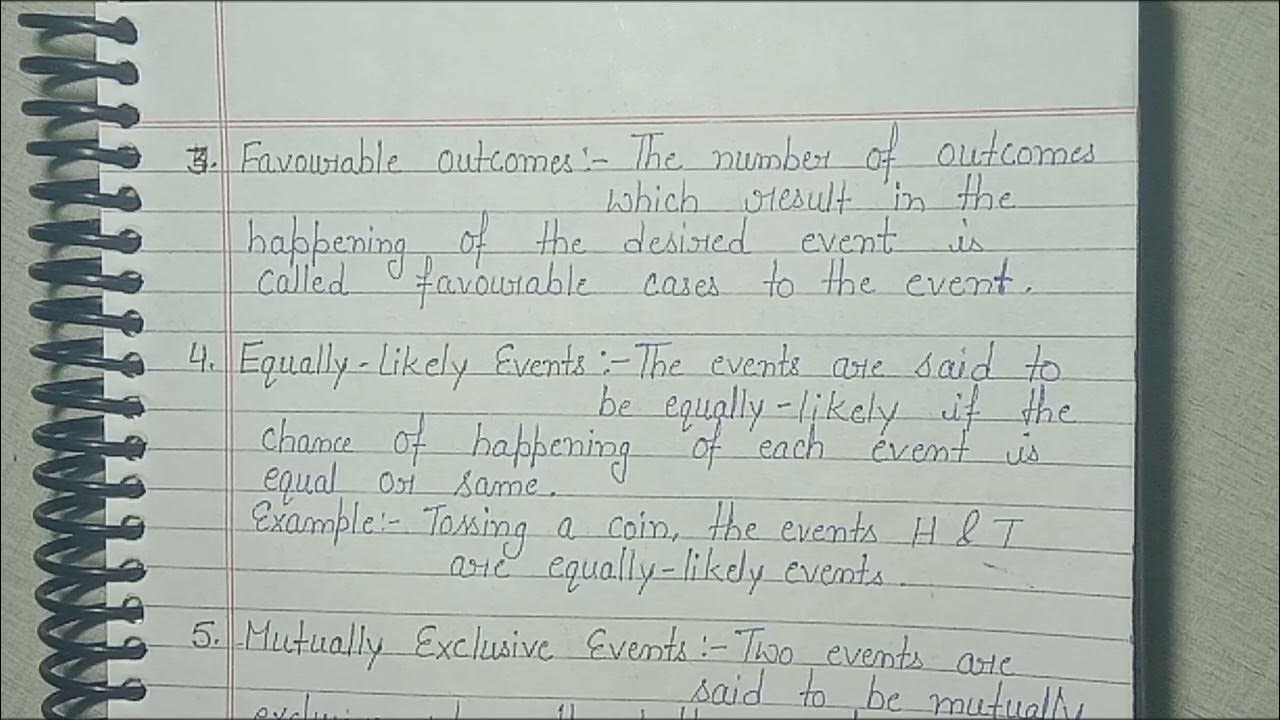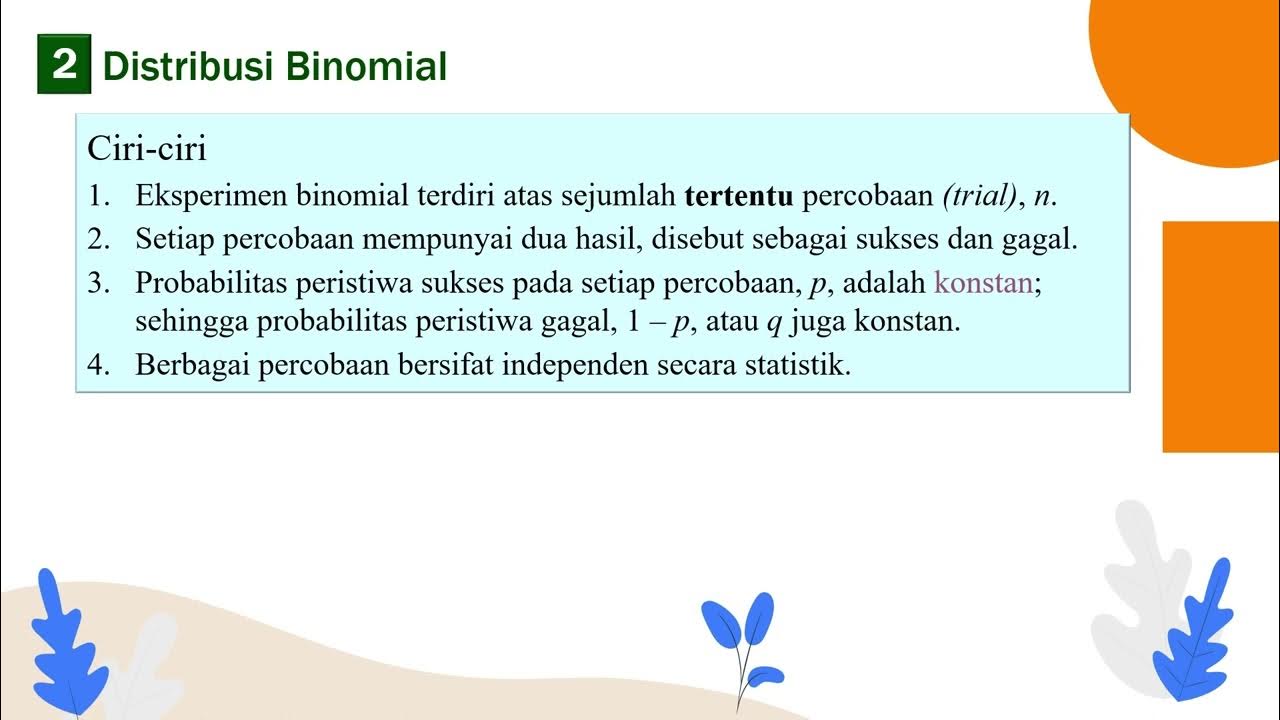The Classical Approach
Summary
TLDRThe classical approach to probability is explained through the script, focusing on experiments with equally-likely outcomes. The probability of an event is determined by the ratio of favorable outcomes to the total outcomes. A practical example of flipping a fair coin three times is used to illustrate the method, calculating probabilities for different events based on the sample space of eight possible outcomes. This approach ensures probabilities fall within the valid range of 0 to 1, reflecting the impossibility of impossible events and certainty of certain events.
Takeaways
- 🎲 The classical approach is used for calculating probabilities in experiments with equally-likely outcomes.
- 🔢 The probability of an event is found by dividing the number of favorable outcomes by the total number of outcomes.
- 📚 The sample space is the set of all possible simple outcomes of an experiment.
- 🌐 In the classical approach, all simple outcomes in the sample space are assumed to be equally likely.
- 🔑 The formula for probability in the classical approach is P(E) = (f) / (N), where f is the number of outcomes for event E, and N is the total number of outcomes.
- 🧩 To apply the formula, identify the event, list the outcomes that define it, and calculate the size of the set.
- 🚀 Example given is flipping a fair coin three times, with a sample space size of eight.
- 🎯 For event A, there are three outcomes, leading to a probability of 3/8.
- 🎯 For event B, there is one outcome, leading to a probability of 1/8.
- 🎯 For event C, there are four outcomes, leading to a probability of 4/8.
- 🎯 For event D, there are seven outcomes, leading to a probability of 7/8.
- 📉 The classical approach ensures probabilities are between 0 and 1, validating the definitions of impossible and certain events.
Q & A
What is the classical approach in probability theory?
-The classical approach is a method for finding the probability of an event in an experiment where all outcomes are equally likely. It involves counting the number of favorable outcomes for an event and dividing by the total number of possible outcomes.
What is the sample space in the context of probability?
-The sample space is the set of all possible outcomes of an experiment. In the classical approach, it's assumed that each outcome in the sample space is equally likely.
How do you calculate the probability of an event using the classical approach?
-To calculate the probability of an event using the classical approach, you count the number of ways the event can occur (denoted as 'f') and divide it by the total number of outcomes (denoted as 'N') in the sample space.
Why is it important to ensure that all outcomes are equally likely in the classical approach?
-In the classical approach, the assumption that all outcomes are equally likely is crucial because it simplifies the calculation of probability by allowing for a straightforward division of the number of favorable outcomes by the total number of outcomes.
What is the sample space when a fair coin is flipped three times?
-When a fair coin is flipped three times, the sample space consists of all possible combinations of heads (H) and tails (T), resulting in a total of 8 outcomes: HHH, HHT, HTH, HTT, THH, THT, TTH, TTT.
How many outcomes are there for event A in the example of flipping a coin three times?
-For event A, which is defined by the outcomes tails-heads-heads, heads-tails-heads, and heads-heads-tails, there are three outcomes.
What is the probability of event A when flipping a coin three times?
-The probability of event A, which has three favorable outcomes, is three-eighths (3/8) when a coin is flipped three times.
What is the probability of getting three heads in a row when flipping a coin three times?
-The probability of getting three heads in a row (event B) is one-eighth (1/8), as there is only one outcome (HHH) that results in this event.
What is the probability of event C in the coin flipping example?
-The probability of event C is four-eighths (4/8), as there are four outcomes that satisfy the conditions of event C.
What is the probability of event D in the coin flipping example?
-The probability of event D is seven-eighths (7/8), as there are seven outcomes that satisfy the conditions of event D.
Why can't the probability of an event be less than zero or greater than one in the classical approach?
-In the classical approach, the probability of an event cannot be less than zero or greater than one because the probability is calculated as a ratio of the number of favorable outcomes to the total number of outcomes, which inherently limits the range to between 0 and 1.
Outlines

Cette section est réservée aux utilisateurs payants. Améliorez votre compte pour accéder à cette section.
Améliorer maintenantMindmap

Cette section est réservée aux utilisateurs payants. Améliorez votre compte pour accéder à cette section.
Améliorer maintenantKeywords

Cette section est réservée aux utilisateurs payants. Améliorez votre compte pour accéder à cette section.
Améliorer maintenantHighlights

Cette section est réservée aux utilisateurs payants. Améliorez votre compte pour accéder à cette section.
Améliorer maintenantTranscripts

Cette section est réservée aux utilisateurs payants. Améliorez votre compte pour accéder à cette section.
Améliorer maintenantVoir Plus de Vidéos Connexes

Probability of an Event

Probability explained | Independent and dependent events | Probability and Statistics | Khan Academy

4.1 An Introduction to Probabilities

Probability, Meaning and basic concepts of Probability

Sesi 5 3 Distribusi Probabilitas Bagian 3

sta301 lec 19 | STA301 short lec 19 | Statistics and probability in urdu /Hindi
5.0 / 5 (0 votes)
